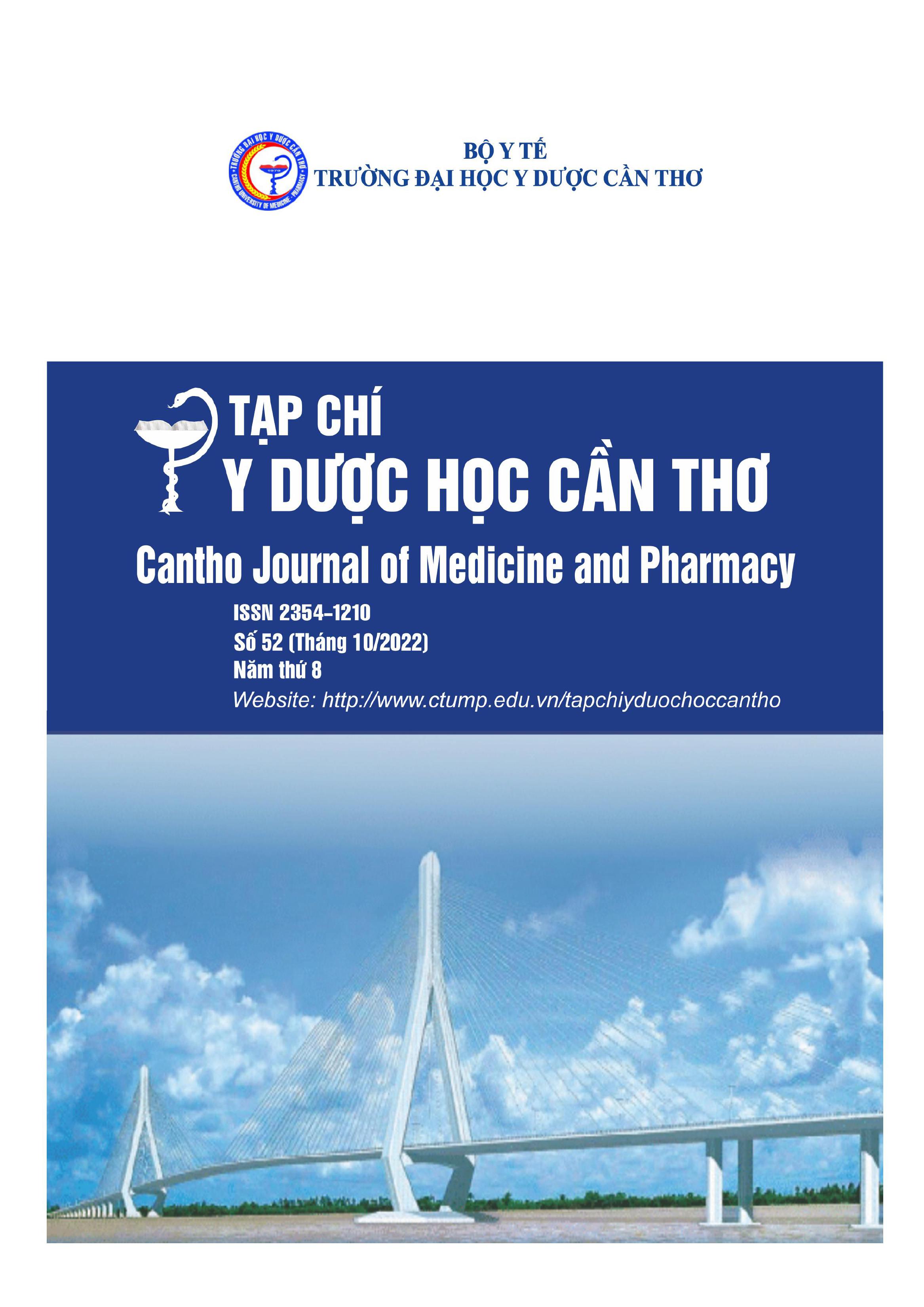STUDYING THE VALUE OF ULTRASOUND BASED ON THE TI-RADS ACR 2017 CLASSIFICATION IN DIAGNOSIS OF THYROID NODULES AT CAN THO ONCOLOGY HOSPITAL 2020-2022
Main Article Content
Abstract
Background: The incidence of thyroid nodules has increased in recent years and is mainly detected by ultrasound. The ACR TI-RADS 2017 classification is a valuable system that helps in classifying risks, recommendations for FNA or ultrasound follow-up. Objectives: Determining the characteristics of ultrasound images of thyroid nodules based on the TI-RADS ACR 2017 classification and the value of the system in the diagnosis of thyroid nodules with pathological comparison. Materials and method: All patients with thyroid nodules were resected at Can Tho Oncology Hospital. Prospective, descriptive cross-sectional study. Results: The study was conducted on 175 patients and 211 thyroid nodules with an average age of 41.9 ± 11.4, the female/male ratio is 5.0. Pathological results were 162 malignant thyroid nodules (76.8%) and 49 benign thyroid nodules (23.2%). The malignancy risk of thyroid nodules increased gradually according to the TI-RADS classification and the scores of TR1, TR2, TR3, TR4 and TR5 respectively 0%, 0%, 1.9%, 34.6% and 63.6%. The TI-RADS ACR 2017 classification has sensitivity, specificity, positive predictive value, negative predictive value and accuracy respectively 98.1%, 79.6%, 92.9%, 94.1% and 93.8%. Conclusion: There is a match between the ACR TIRADS 2017 classification and pathological results with statistical significance with p <0,001
Article Details
Keywords
Thyroid nodules, TI-RADS ACR 2017, pathology
References
2. Bùi Thị Thanh Trúc (2019), Đánh giá giá trị của việc áp dụng bảng phân loại TIRADS theo ACR TIRADS 2017 trong siêu âm tuyến giáp, Tạp chí Ung Thư học Việt Nam, Số 5, tr. 141-146.
3. Ahmadi, S. (2019), A direct comparison of the ATA and TI-RADS ultrasound scoring systems, Endocrine Practice, 25(5), pp 413-422.
4. Franklin N. Tessler (2017), ACR Thyroid Imaging, Reporting and Data System (TI-RADS): White Paper of the ACR TI-RADS Committee, The Journal of the American College Radiology, 14(5), pp. 587-595.
5. Frates, M. C (2005), Management of Thyroid Nodules Detected at US: Society of Radiologists in Ultrasound Consensus Conference Statement, Radiology, 237(3), pp. 794-800.
6. Gao L (2019) Comparison among TIRADS (ACR TI-RADS and KWAK- TI-RADS) and 2015 ATA Guidelines in the diagnostic efficiency of thyroid nodules, Endocrine,64(1), pp. 90-96.
7. Guth, S. et al. (2009), Very high prevalence of thyroid nodules detected by high frequency (13MHz) ultrasound examination, European Journal of Clinical Investigation, 39(8), pp. 699-706. 8. Hegedüs L (2004), The thyroid nodule, NEJM, 351 (17), pp. 1764-1771.
9. Hekimsoy İ. (2021), Diagnostic performance rates of the ACR-TIRADS and EU-TIRADS based on histopathological evidence, Diagn Interv Radiol, 27(4), pp. 511-518.
10. Leenhardt, L. et al. (2013), 2013 European Thyroid Association Guidelines for Cervical Ultrasound Scan and Ultrasound-Guided Techniques in the Postoperative Management of Patients with Thyroid Cancer, European Thyroid Journal, 2(3), pp. 147-159.
11. Patil YP et al. (2020), Correlation of ACR-TIRADS (thyroid imaging, reporting and data system)-2017 and cytological/ Histopathological (HPE) findings in evaluation of thyroid nodules, International Journal of Health and Clinical Research, 3(11), pp. 6-19.
12. Popoveniuc G., Jonklaas J. (2012), Thyroid nodules, The Medical Clinics of North America, 96(2), pp. 329-349.
13. Shen Y, Liu M, et al. (2019), Comparison of Different Risk-Stratification Systems for the Diagnosis of Benign and Malignant Thyroid Nodules, Frontiers in Oncology, 9, pp. 378.
14. Xie, C., Cox, P., Taylor, N., & LaPorte, S. (2015), Ultrasonography of thyroid nodules: a pictorial review, Insights into Imaging, 7(1), pp. 77–86.
15. Yoon JH (2017), Diagnosis and Management of Small Thyroid Nodules: A Comparative Study with Six Guidelines for Thyroid Nodules, Radiology, 283(2), pp. 560-569.


